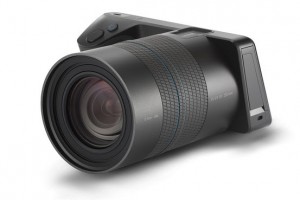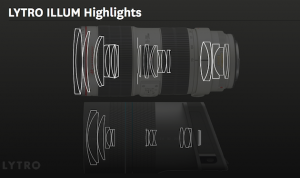

Well, for one, it's packed with features to impress. Since its first camera, Lytro has been working with both consumers and photographers to get perspective on what kinda of camera they could brand to customers; and what type of customers they are trying to petition. So instead of going backwards, and making a simple point-and-shoot camera for the very casual picture taker, the company stuck to its guns; manufacturing a product for “prosumer photographers, including people who take pictures for work, or skilled photography hobbyists”. With an 8x zoom lens, it can shoot at f2.0, letting in enormous amounts of light. Its 1/4000 of a second shutter speed is well suited for meeting your high-speed photography needs, such as sports, or unexpected candid memories. The camera also runs a version of Android, contains a faster Qualcomm Snapdragon processor, 4-inch touchscreen, as well as playback controls for previewing dimensions.


Lytro Illum is perfect for controlling your photo, and by capturing images as rays of light instead of pixels, the camera accomplishes exactly that. With 4 times the resolution of the first Lytro, a 40 megaray (40 million rays) customized sensor for capturing color, intensity, and direction of the light itself, this new addition can take amazing pictures. The company hopes its professional grade “appeals to full-time photographers and artists”. Why else would you spend over a grand for a camera? Just as a comparison, a classic Canon camera carries a lens zoom range of about 70 to 200mm, bears between 22 pieces of glass, weighing in (with its full-frame body) around 8 pounds. The Illum has 13 pieces of glass, and only weights about 1.5 pounds. The uniqueness in this? Well, for the Canon to work by correcting aberration in light, it not only needs a lot of glass, but a certain curvature in the lens to make the photons land on the sensor accurately. Lytro has a special image sensor for computing direction of light via computation and software. Also, don't forget about the “magical photography” trick of being able to refocus the digital file after it is shot. You can still create what the company calls “living pictures”. Lytro believes this kind of interactive photo tinkering is the next generation of digital photo-taking.
“We think that if you look at how pictures work today in the world and on the Web, we're really still tied to the legacy of print. This will really replace digital in the way that digital has replaced film...Transformational tech needs a transformative product to bring the full benefits.”

 Laptop & Tablet Parts
Laptop & Tablet Parts




















